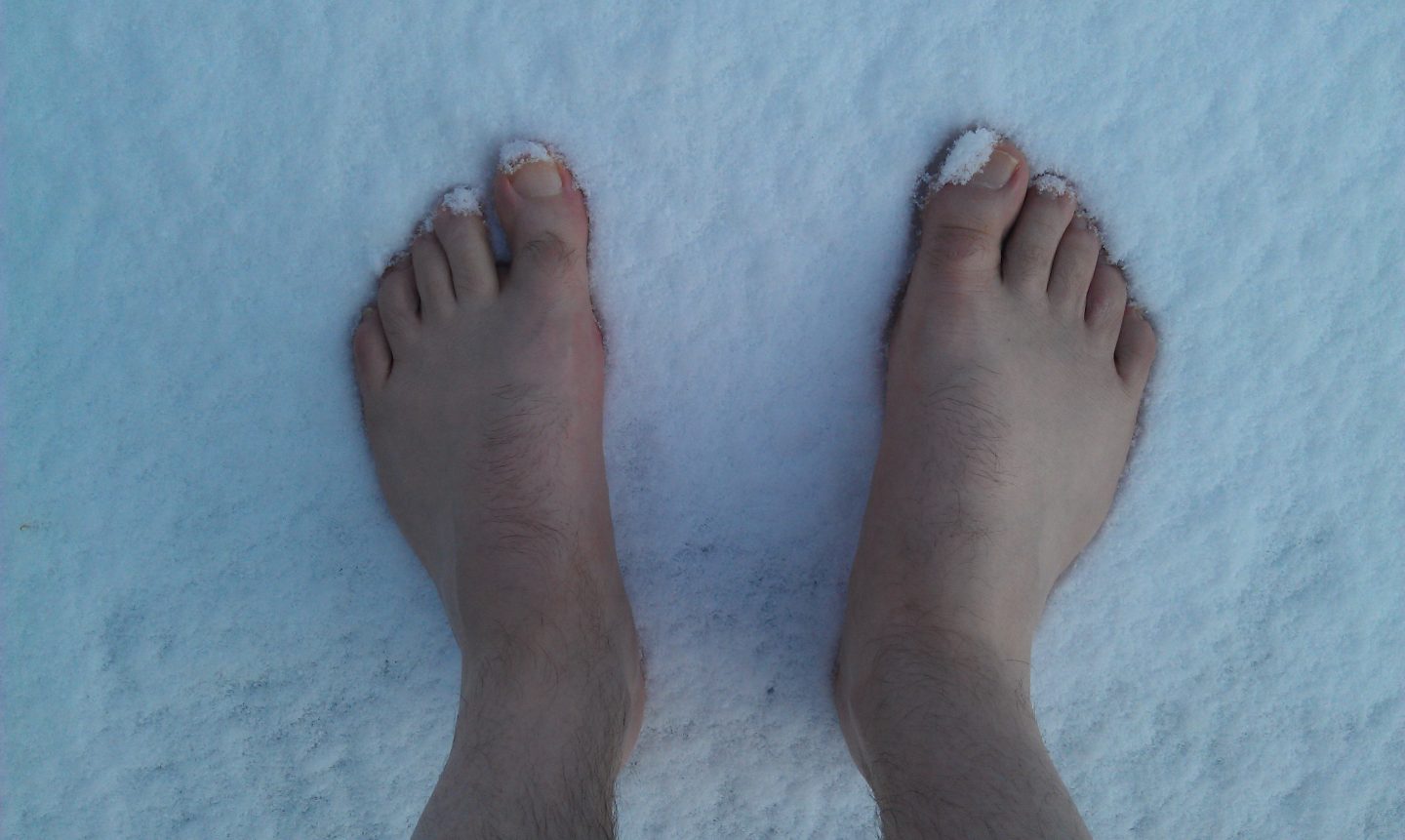Chronic Cold Feet is Actually a Thing
Raynaud’s Phenomenon is a disease characterized by frequent and/or prolonged coldness in a person’s extremities. This coldness is due to sudden and exaggerated constriction of the blood vessels in the hands and feet in response to cold temperatures. Under normal conditions, a person’s blood vessels are meant to constrict in response to cold temperatures, but to a lesser degree. This helps minimize heat loss, allowing the blood vessels to maintain a relatively constant temperature. In Raynaud’s, the blood vessels respond far too quickly and vigorously, resulting in little to no blood flow in the digits. This lack of blood flow creates another common characteristic of Raynaud’s: colour changes. The fingers or toes tend to first turn white as blood flow is substantially hindered, then they may become blue as the vessels dilate. This is because at first, only deoxygenated blood can enter the slowly opening capillaries. Finally, as warmth returns to the hands or feet, oxygenated blood rushes into the sufficiently open vessels, turning the fingers or toes red. This sequence of colour changes is characteristic of people with Raynaud’s Phenomenon, but not everyone with Raynaud’s experiences all of these changes.
So, is it Bad?
The prognosis for people with Raynaud’s Disease depends on which type of Raynaud’s they have. Primary Raynaud’s displays all of the above characteristics and is relatively harmless. It is of unknown cause, but is also not associated with any other diseases. People with Primary Raynaud’s Phenomenon often just need to stay away from sudden temperature drops in order to manage the disease. Secondary Raynaud’s, on the other hand, is a bit more serious. This form of Raynaud’s Phenomenon occurs with autoimmune diseases, such as scleroderma, systemic lupus erythematosus, and rheumatoid arthritis. Because of this, it might be assumed that secondary Raynaud’s is also an autoimmune disease; however, most sources refer to Secondary Raynaud’s as a result of autoimmune diseases rather than a disease unto itself. I find this particularly perplexing, since Primary Raynaud’s seems to be its own disease. How many patients diagnosed with Secondary Raynaud’s have a blood vessel problem (as in primary Raynaud’s) in addition to the underlying autoimmune disease that causes Secondary Raynaud’s? Because of this, I think it is safe to suggest that if you have Primary Raynaud’s Disease, it is worth getting checked out to make sure it isn’t a manifestation of some other disease.
One way that doctors can differentiate between Primary and Secondary Raynaud’s Disease is by testing for antinuclear antibodies (ANAs). Antinuclear antibodies are autoimmune antibodies which specifically attack self-proteins within cell nuclei. Elevated numbers of these antibodies may indicate an autoimmune disease, and can also confirm Secondary Raynaud’s. Not all patients with Secondary Raynaud’s have elevated ANAs, however, and not all patients with Primary Raynaud’s have normal ANAs. It is therefore necessary to determine the presence of other diseases to accurately assess the diagnosis of Primary or Secondary Raynaud’s Phenomenon.
More than Just Blood Vessel Constriction
Antinuclear antibodies aren’t the only molecules doing weird things in Raynaud’s Disease. Studies have shown that there are increases in fibrinogen, IgG, and IgA in patients with Raynaud’s Disease. Fibrinogen is a blood clotting factor, and IgG and IgA are antibodies. Spengler et al propose that these molecules are the correct structure to create bridges between red blood cells. These bridges can cause red blood cells to aggregate, making it difficult or impossible for them to travel through the tiny capillaries. This unfortunate occurrence makes it even more unlikely that people with Raynaud’s Phenomenon will have properly functioning circulation.
In addition, it is also thought that IgG and IgA contribute to circulating immune complexes. Van der Meulen et al found that people with Raynaud’s Disease (particularly those with Secondary Raynaud’s) displayed elevated immune complex levels in comparison to the control. People who were not diagnosed with Secondary Raynaud’s Phenomenon but had suspected autoimmune disease or Secondary Raynaud’s also displayed higher circulating immune complex levels. It is not known what contribution these immune complexes make to the disease pathology, but I wonder if they can further compound the mechanisms behind Raynaud’s Disease…
Cryoglobulinemia is a disorder in which antibodies (or immunoglobulins) become solid or gel-like at low temperatures. This can cause inflammation and damage to blood vessels, also known as vasculitis. What I find particularly intriguing is that a symptom of cryoglobulinemia is Raynaud’s Phenomenon, and types 2 and 3 cryoglobulinemia are associated with autoimmune diseases. So, in addition to blood vessel constriction and possible red blood cell (erythrocyte) aggregation, people with Raynaud’s Phenomenon may also have circulating immunoglobulins that congeal when cold. And with Raynaud’s Disease, well… That’s pretty much always.
This Sounds Ridiculously Complicated
If it seems like there’s a lot going on with Raynaud’s Phenomenon, that’s because there is. Researchers haven’t even scratched the tip of the iceberg when it comes to its epidemiology. Secondary Raynaud’s seems to have gotten more love in terms of studies and knowledge gained, but hey, speaking as someone with Primary Raynaud’s, I can tell you it really isn’t that big of a deal. The worst thing I have to deal with is never being able to wear flip flops (which, admittedly, sucks, but I’ll take that over an autoimmune disease any day). Therefore, I don’t blame researchers for sinking more time and money into Secondary Raynaud’s Phenomenon. Hopefully someday we can discover the mechanisms behind both Primary and Secondary Raynaud’s Phenomenon and treat both cases accordingly. In the meantime, I think exercising might be an excellent way of alleviating my chronic cold feet.

Recent Comments